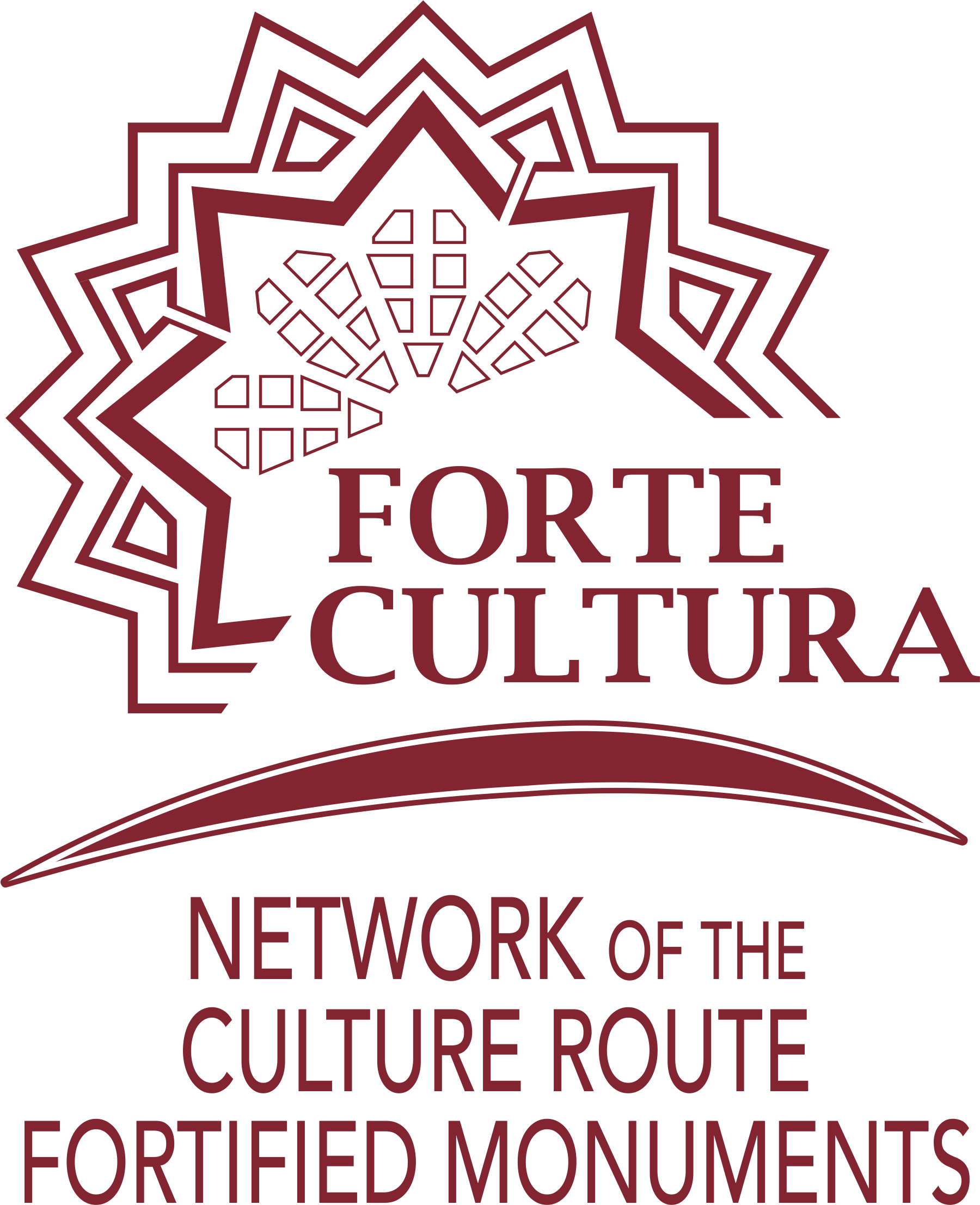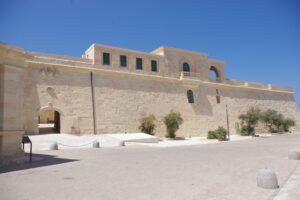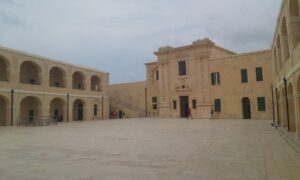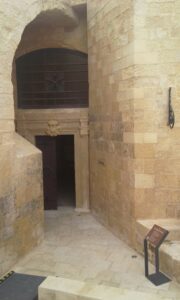by John Ebejer
There are various approaches to the conservation of built heritage and adaptive reuse is one of them. Adaptive reuse involves any activity that conserves the physical fabric and the historic value of a heritage building while concurrently providing the building with a new use that guarantees its continued upkeep and maintenance over the long term.
Efforts to renovate and preserve the fortified heritage should seek to comply with heritage restoration principles. The principles are laid down in various international charters and are embodied by good practice developed over many years. Original structures and their various features should be respected although reconstruction is also an option in justified cases. The design team require talent and sensitivity to the genius loci as they restore the past and create the present of a fortified landscape.
Fortified heritage has values similar to other heritage buildings and sites, but it also possesses unique values that are particular to this form of architecture. The values associated with a site should constitute the departure and arrival point for any type of intervention. An essential part of the process therefore should be the appropriate identification of these values. In drawing up proposals for the conservation and adaptive reuse of a fortified heritage site, it is essential for the designers, architects, engineers and historians to understand and appreciate the values of the heritage.
This article provides a framework the better understanding of fortified heritage and also of the values that require consideration when a project on fortified heritage is being carried out. Seven values have been identified, possibly of different priorities but all requiring careful attention.
This article is based on an acadamic paper that I co-wrote with colleagues from the Cracow University of Technology (Ebejer J, Staniewska A, Środulska-Wielgus J & Wielgus K, 2023) Values as a base for the viable adaptive reuse of fortified heritage in urban contexts, Museology and Cultural Heritage, 11:2, 41-72).
Values for adaptive reuse
The values that are important for the defence heritage are discussed below.
1. the values of history, memory and identity
A fortified landscape tells a story; this is a town or area that was attacked or that was liable to be attacked. It is indicative of geopolitical transformations of past and present states and the various alliances, conflicts and border changes that happened in history. It is a reflection of the science of warfare which prevailed at the time it was built and shows the evolution of the art of fortification and defense structures as an element of civilization change, the development of science, technology and inventiveness.
Fortifications are symbolic and impressive images of power in historical and geographical contexts of aggression or defence. They are a historical reflection of the will of people to be politically, economically, socially and culturally independent. They also are documents of the impact on landscapes of historical figures: rulers, strategists and military engineers related to the design, construction and modernization of defense works. In many countries, castles and fortifications played a role in nation-building.
Fortifications can play a role in the memory of a community as they are reminders of events, often involving conflict that may be part of the shared history of that community. They belong to the collective memory and therefore have educational value as they provide a stimulating and nurturing environment related to the cultural experience of military heritage. An essential value of a historic site is its authenticity. This requires the preservation and enhancement of values that are themselves at the core of a site’s attractiveness.
2. scientific and technical values
Fortifications represent a group of values connected with their scientific meaning reaching beyond history defense strategies and European fortification defense systems. Such strategies and systems were developed in parallel with developments of means of attack such as types, range and accuracy of weapons and artillery, communication, military transport and observation. Fortifications testify to the ingenuity and technical skills of builders and engineers and provide interesting insights in the construction techniques of the time, as well as the building solutions and construction technologies to ensure the structures’ resilience to attack. They also show the impact on the dynamics or limitations of socio-economic development in the surrounding areas understood as spatial structure of settlement, networks of communication, crafts, building materials and food production.
3. territorial and architectural values
While some fortified structures may be stand-alone isolated elements constructed according to the rules of defense and particular architectural styles, others may form part of a larger system of buildings, structures, walls and ground remodeling. The value of the whole is greater than the specific value of each of its parts, all of which require protection irrespective of how modest they may seem. Shaping the fortified landscape for direct combat purposes as well as for representative occasions was also the result to some extent of using artistic means known from garden art, landscape architecture, painting and scenography. Today they are examples of historical, large-scale composed complexes. Territorial value also refers to the location of the fortification system in relation to the urban settlement and to geographic features such as rivers, hills and surrounding terrain. Some fortified landscapes contain pockets of land with little or no human intervention. Such land sometimes develop into habitats for protected species of plants and animals. The ecology is also a value that merits safeguarding.
4. landscape and aesthetic values
More than many other types of architecture, fortifications have an integral relationship with the surrounding landscape. It is not uncommon for a fortified landscape to have stretches of wall that offer panoramic outward views over the countryside or over adjoining urban areas. It is also often the case that the fortifications can be seen from surrounding areas and in some cases this offers spectacular views of the fortified heritage. For people engaging in leisure and tourism, such views enhance the visitor experience. The aesthetic value should be carefully protected if and when any intervention on the fortified heritage is being considered or where new development is being proposed in the vicinity.
5 The value of environmental sustainability
Discussions on the adaptive reuse of fortified heritage should also take into account issues relating to climate change and sustainability. Appropriate reuse of fortified heritage provides facilities which would otherwise require new buildings, energy-intensive construction and the take-up of precious land resources. The end of military use leaves behind many derelict buildings and spaces, sometimes over relatively large areas. Climate change and sustainability arguments provide additional justification for action and investment in abandoned fortified heritage.
Sensitive adaptive reuse of historic buildings avoids new construction and land use, reduces waste and preserves the energy that is embodied in the building while generating additional positive economic, environmental, social and cultural benefits.
In considering what uses to make of a fortified landscape, environmental sustainability is a vital consideration. Whereas some level of commercial activity may be considered, excessive commercialisation should be avoided as this is likely to compromise the heritage value of the place. For the open space of fortified landscapes, encouraging biodiversity and ecology to flourish is a use worth considering not least because of its environmental sustainability. The same can be said about tree planting provided that other heritage values are not compromised.
6. social and cultural values
The adaptive reuse of fortified heritage can and should seek to reinforce the identity of a community as this would be a significant benefit to the community in a world of increasing globalisation and loss of social identity. The historicity of the heritage plays a central role in reinforcing identity. For heritage sites, ICOMOS, Australia refers to social value which it describes as ‘the associations that a place has for a particular community or cultural group and the social or cultural meanings that it holds for them.’
Social values are also reflected in the use of the fortified heritage. Uses such as community centre, recreational activity and venue for cultural events bring social and cultural benefits to the local community and should therefore be actively considered in developing project concepts for fortified heritage.
7. economic values
Financial sustainability is a vital consideration in the adaptive reuse of fortified heritage. In the long term, the physical condition of the heritage is best maintained if sufficient revenue is generated to sustain its regular upkeep and maintenance, without having to rely on external sources of funds. This is also necessary to safeguard permanently the various intrinsic values of the fortified heritage. For any fortified heritage this is not easy to achieve for two main reasons. Maintaining historic buildings and structures in a pristine condition is expensive. Moreover, there are limits to how much revenue can be generated from adaptive reuse of the fortified heritage.
The renovation and reuse of Fort St. Elmo
Fort St. Elmo is an extensive fortification system occupying a large area at the end of the Valletta peninsula. It is strategically located overlooking the entrances of the Grand Harbour and Marsamxett Harbour. Within the fort and the bastions are many buildings that were used as barracks. After the end of the British military base in Malta in 1979, parts of Fort St. Elmo were used as a police academy but most of the site was abandoned. With decades of neglect, buildings and spaces suffered significant deterioration except that some building received some basic maintenance as they were used as a police academy.

Preparatory works on Fort St. Elmo began in 2008 with on-site works starting two years later. The project site presented many challenges. It consisted of numerous buildings, cavaliers, fortification walls, bastions and other structures spread out over an area of four hectares. Many of the buildings and structures were in a poor state.

It was decided to have two primary uses for the site namely a military history museum and a ramparts walk. The project was virtually complete by 2012. The new museum is housed in various buildings within the fort, with each building having a particular theme. The museum has a total indoor display are of 3,000 square metres. The ramparts walk is along parts of the bastions enabling walkers to enjoy the outward views of the harbours, whilst appreciating the historic heritage of the fort. Moreover the central parade ground and other external spaces in between the various buildings and structures operate as open air venues for concerts, theatre, receptions, fairs and exhibitions. The rehabilitated buildings provide a unique heritage backdrop thus enhancing the event experience.
The project transformed the site from one that is poorly kept and closed to visitors, to one with a pleasant ambience where the historic relevance of the site can be appreciated by Maltese and tourists alike. The project resulted in better utilization, conservation, enhancement and presentation of a fortification system that is a key component of Valletta’s and Malta’s cultural heritage.
The following is an explanation how each of the seven values helped guide the decisions taken on the reuse and interventions.
1. the values of history, memory and identity
Because of its position at the centre of the Mediterranean, Malta played an important role throughout history as superpowers vied for supremacy in the Mediterranean and in southern Europe. Fort St Elmo has a unique geographical location at the tip of a peninsula separating two natural harbours. It protects the entrance to the harbours and it is for this reason that the Knights of St. John invested so heavily in its development and defense, as did the British forces after 1800. Fort St Elmo is Malta’s most important historic site because of its role in two important events in the history of Malta and of the Mediterranean, namely the Great Siege of 1565 and the island’s defence in World War II (1940 – 1944).
2. scientific and technical values
Fort St Elmo started its existence as a solitary tower in the early 1500’s and eventually became a complex system of cavaliers, fortified walls, barracks, ammunition stores, bastions and gun emplacements. It was a ‘war machine’ that evolved and was constantly adapted in accordance to the warfare technology of the time and to the then-current construction techniques. Most of the buildings and structures were built by the Knights of St. John (1530-1798) intended primarily to resist seaborne attacks. The evolution of the Fort continued with further structures and alterations by the British forces (1800-1979). In the early part of the twentieth century the British introduced a new material into the fort namely concrete in the construction of gun emplacements and pillboxes. These were intended to defend the harbours from both seaborne and air attacks and subsequently had a pivotal role in Malta’s defence during the Second World War.
The fort and its many buildings and structures displayed construction techniques spanning hundreds of years. Moreover the fort displayed a narrative of military history with the buildings and structures being tangible evidence of that narrative. In the developing the project concept therefore it was considered essential to retain and restore all the buildings and spaces into their original state so that the many different construction techniques would be conserved and presented to current and future generations. A clear decision was taken by the project team not to demolition any structure, no matter how insignificant it may have seemed. It was also decided not to build any new structure in the open spaces to safeguard the spirit of the historic spaces. The only exceptions were minor additions to facilitate accessibility for people with mobility difficulties. The restoration process of each building and structure was guided by restoration method statements to ensure that the correct techniques were used throughout.
3. territorial and architectural values
The project was not seen in isolation but considered as part of a wider urban area. The project site adjoins residential areas of lower Valletta and is within walking distance to the centre of Valletta, Malta’s capital. Adaptive reuse of Fort. St. Elmo was considered to be a catalyst for the regeneration of the lower end of Valletta which had seen many years of under investment. Increased activity in the area was a means for encouraging investment by the private sector in restoration and reuse of historic buildings.
Because of its military use, Fort St. Elmo was never accessible to the public. Residents living in lower Valletta would have never stepped into the fort in spite living just a few metres away. In their minds the fort was not considered to be part of the city they cherish. The project sought to promote the idea that Fort St. Elmo is part of the city of Valletta, and not something distinct to it.
4. landscape and aesthetic value
In terms of landscape, the site offers many opportunities with exceptional views of both the Grand Harbour and Marsamxett Harbour. All buildings and structures within it are historic so it provides numerous attractive open spaces with a heritage backdrop. The project team sought to make the best possible use of the aesthetically pleasing views - both outward and inward views.
5. ecological sustainability
The project brought back into sustainable use buildings that were unused or underutilized. If the same uses and facilities were provided in a new construction, the carbon impact would be significantly higher. Restoration prevented further decay and eventual collapse of many historic buildings and structures within the fort. More than just being restored, however, the buildings and area were brought into a sustainable use.
6. social and cultural values
Fort St. Elmo has immense cultural value not only because of its historical significance to Valletta and Malta but also because it is part of a larger World Heritage Site, namely Valletta. The project sought to safeguard and reinforce the cultural value of the site. The new uses for the site, namely museum and ramparts walk are compatible with the cultural value of the site. Moreover the use of the spaces for cultural events such as concerts further reinforces the fort’s cultural significance. The use of the fort’s open spaces for activities provides a cultural facility for Valletta residents, Maltese and tourists.
7. economic values
The economic value of the project was considered at two levels. At the level of the national economy, the newly refurbished Fort St. Elmo provides a new experience for visitors thus resulting in the enhancement of the tourism product. The fortification surrounding Valletta are an essential feature of the city’s attractiveness and the adaptive reuse of Fort St Elmo enhances that attractiveness. This makes Valletta and Malta more attractive for international visitors. The project was in line with the strategy of rebranding Malta’s tourism towards heritage and culture.
At the level of the site itself, the financial feasibility was a foremost consideration. In the long-term, the conservation value of a historic site is best maintained if the adaptive reuse generates sufficient income for the upkeep of the building and the spaces. Making Fort St. Elmo financially feasible was not an easy task because of the extensive area involved and because the internal spaces were fragmented in a number of relatively small buildings.
Fort St. Elmo immediately after the restoration in 2012
This article is based on a co-authored paper about the values that are relevant for the adaptive reuse of fortified heritage. In addition to the Fort. St. Elmo case study, the article also shows how these values were applied in Zamość Fortress in Poland.





Leave a Reply